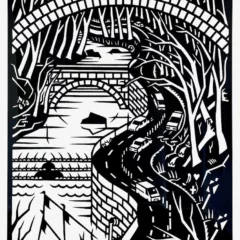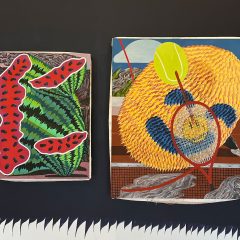Post by Andrea Kirsh
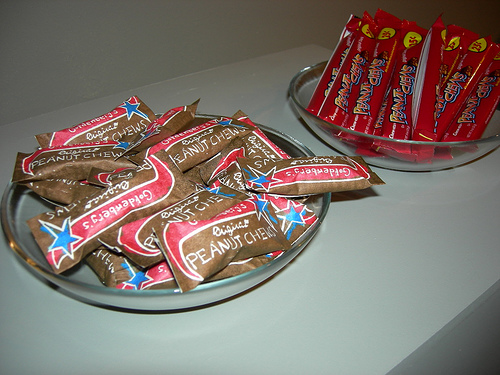
Melissa Kramer’s peanut chews (left) at Space 1026’s handjob show
I assume that “handjob” carries the same innuendo to the 1026 generation as it does for mine. Well, I may not be able to define art, but to quote Justice Stewart, “I know it when I see it,” and I have to hand it to Courtney Dailey, curator of this inspired exhibition in which a group of artists manually stimulate our imaginations and remind us that humor is an under-utilized resource in the artworld. Courtney invited “a handful of artists [to] investigate what happens when you try to make things with your own hands in the image of those things made by machines.” The exhibition is up through March 20 (check when the exhibition is actually open; with 1026 it is not obvious) and I hope someone has the smarts to take it on the road, because this work deserves national attention.
What does ‘hand-made’ look like in this post, post-industrial world, where digital trumps analog and virtual is edging out real? And what is it worth?
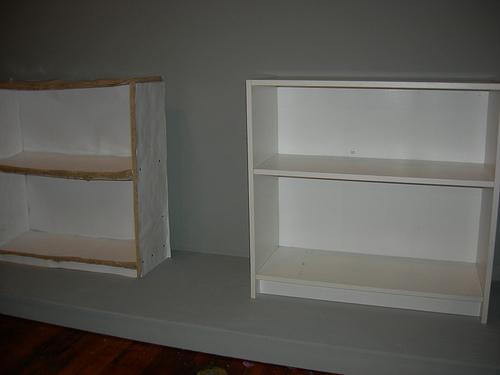
Philly and Billy bookcases by Jake Hockel
The first item on view is Jake Hockel‘s version of an Ikea plastic laminate-on-pasteboard bookcase, alongside the real thing: the ‘Philly’ to Ikea’s ‘Billy’ . Hockel made his own board, with sawdust, glue and paper veneer; see the 1026 web-site for photos of the process. The glue alone cost $49.95; we won’t speculate on what MFA’s get for their time. Ikea has little to worry about; Hockel‘s version looks as though it has been through a flood. But art may not recover. It’s a great riposte to Duchamp’s suggestion that it’s the thought that counts, as well as a new take on process art.

Emily Drury’s fortune cookies
The artists interpreted the challenge in wonderfully various ways. Several produced hand-made versions of junk food (Tasty-cakes and Peanut Chews) or not junk, but still machine-produced comestibles (Chinese fortune cookies). The burnt and raggedy edges of Emily Drury’s fortune cookies suggests that there are, indeed, some things that machines do better; or perhaps one needs generations of practice to be able to hand-produce neat versions of such delicacies.
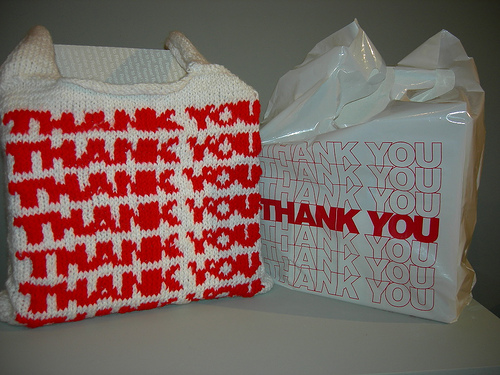
Aryon Hostleton and Alison Macrina’s shopping bag (left)
Aryon Hostleton and Alison Macrina created a splendid, re-usable shopping-bag: knitted, with the word “thank you” repeatedly worked into the pattern, it was a hand-made clone of the usual disposable plastic version. Rosemarie Trokel, eat your heart out.
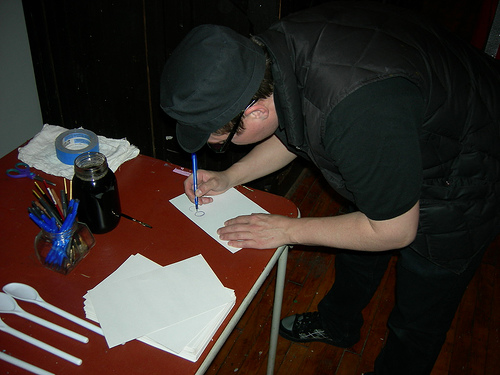
Michael Hyde’s xerox
Others produced manually-powered appliances that are usually high tech, from a non-electric toothbrush powered with the hand-cranked mechanism of an old egg-beater to Michael Hyde’s hand-made, non-Xerox reproductions. Hyde used soap and vanilla extract to aid in the reproduction of drawings, in a modern take on a process known as counter-proofs (which are found in drawings collections; they were often used as part of the print-making process, because they produced a reversed image, as does print-making).

“Photos” of the author taken at Caitlin Perkins’ Photo Booth.
The star of the show is certainly Caitlin Perkins’ “Photo Booth,” a striking, cardboard version made to real scale, decorated with sprayed-silver corrugations and complete with a curtain and a little bin to catch the strip of images.
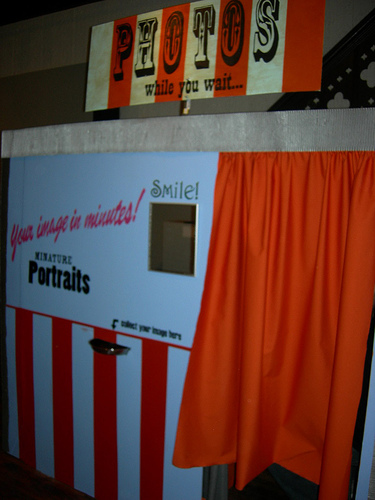
One entered and sat down, to find that on the other side of the glass was the artist, who cheerfully drew the multiple ‘head shots.’ Caitlin told me that she’d invited a professional caricaturist for later in the evening; I couldn’t wait, but was delighted with her version. Is there any doubt that the hand-made triumphs here?
“handjob; a show of hand-made objects that are typically made by machines” at Space 1026 To March 20.
–Andrea Kirsh is a regular contributor to artblog. See her Philadelphia Introductions series at inliquid.


